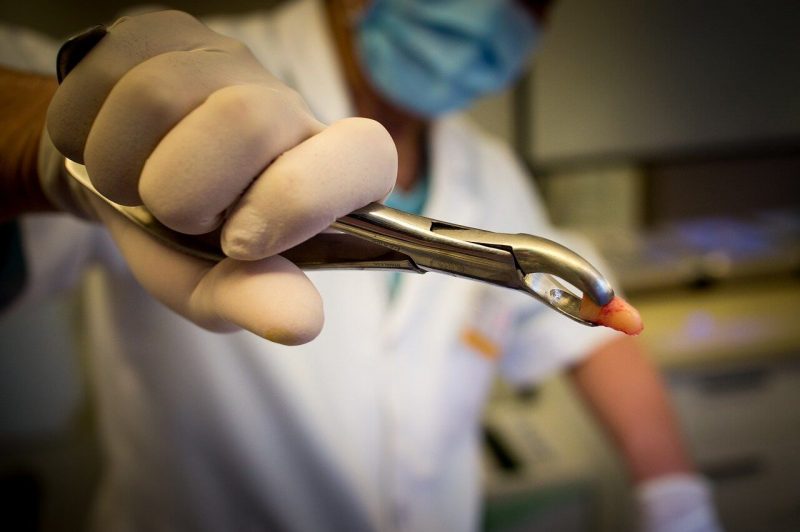Whether due to dental decay or tooth damage, your dentist removed a tooth. While the newly open space in your smile may seem unimportant, your chewing strength and even bone health can become compromised. While other options, such as bridges and partial dentures can help to fill that space, implants are becoming the top treatment option when you lose a tooth. But do you need an implant and how soon can you have an implant after an extraction? Soundview Family Dental is happy to answer your questions and explain more about your dental implant options.
Key Takeaways
- Dental implants may be needed to replace missing teeth after tooth extraction.
- Implant placement timing depends on factors such as general health, infection, tissue, and bone health.
- Immediate placement is possible if tissue and bone are healthy.
- Early placement occurs 2-3 months after extraction, and delayed placement may require bone grafting and longer healing time.
- Implants provide permanent tooth replacement for stability, bone health, and improved chewing function.

What happens after tooth loss?
When your dentist extracts your tooth, the empty space it creates may feel unnatural, but it also creates changes you may not notice right away. When there is no tooth, the jawbone underneath the area begins to deteriorate due to a lack of stimulation from the tooth. In addition, the open space leaves room for surrounding teeth to shift. This shift can eventually affect your smile and the change in alignment can affect your ability to chew properly and even contribute to jaw problems, such as temporomandibular joint, or TMJ.
When do I need an implant after tooth extraction?
As previously mentioned, dental implants are not your only option to replace a missing tooth. In some cases, such as back molars, a replacement tooth may not be necessary or missed. In other cases, a bridge or even a partial denture can be an option, however, these are not permanent and can require additional dental treatments in the future. In addition, dentures can contribute to or even accelerate bone loss, especially if they become loose and rub against the bone ridge underneath the gumline.
Choosing a dental implant to replace a missing tooth provides many benefits and we recommend implants when:
- You are at risk of bone loss
- You are missing multiple adjacent teeth
- You are experiencing dental shift and need tooth stability
- You are looking for a more permanent solution to tooth loss
- You have healthy oral tissue, adequate bone, or are a good candidate for a bone graft
- You are unable to wear dentures
- You are in good health, with no health conditions that could affect bone healing
How soon after tooth extraction can you have an implant?
How soon you can have an implant after tooth extraction depends on many different factors, including your general health, the existence of infection around the extracted tooth, and the health of the surrounding tissue and bone. Implant placement oral surgery breaks down into three main categories: immediate placement, early placement, and delayed placement.
Immediate implant placement
Immediate implant placement after extraction can occur if your tissue is healthy and you have sufficient bone structure. This often occurs when your lost tooth was due to trauma or injury. After extraction, the doctor inserts the titanium rod into the bone. Over the next three to six months, a process called osseointegration occurs. During this process, your bone infuses to the rod. Once this occurs, you are ready to have the permanent crown attached. This immediate placement helps to prevent any potential bone loss.
Early implant placement
Early implant placement, often referred to as immediate-delayed implant placement occurs two to three months after your tooth extraction. The need for this minimal delay is often due to damaged gums and supporting tissue or an infection that must heal before implant placement. Because as much as half of bone resorption can occur within the first three months after extraction, it is essential to perform this placement before the full three-month period. As with an immediate implant, the doctor inserts the titanium rod and you will spend three to six months healing before they can permanently bond the prosthetic crown in place.
Delayed implant placement
In cases where you have had a decaying tooth for some time, your gums and tissue may be in bad shape and you may already have bone loss. When this occurs, you may require a bone grafting procedure to provide enough bone stability for your implant. A bone grafting procedure will require three to six months of healing before your implant procedure is an option. Once healing completes, the procedure is the same. Your doctor inserts the titanium rod into the bone, and you spend the next three to six months allowing the area to heal and the rod to bond with the bone. Once completely healed, the doctor attaches the permanent prosthetic into place.
If you are facing a tooth extraction and considering a dental implant, talk to your dentist to see what options are best for you. At Soundview Family Dental, we can evaluate your dental health, the damaged or decayed tooth, and your eligibility for implant placement. Contact us online or call (425) 563-6360 today to schedule an appointment and let us help you get your healthy smile back.


